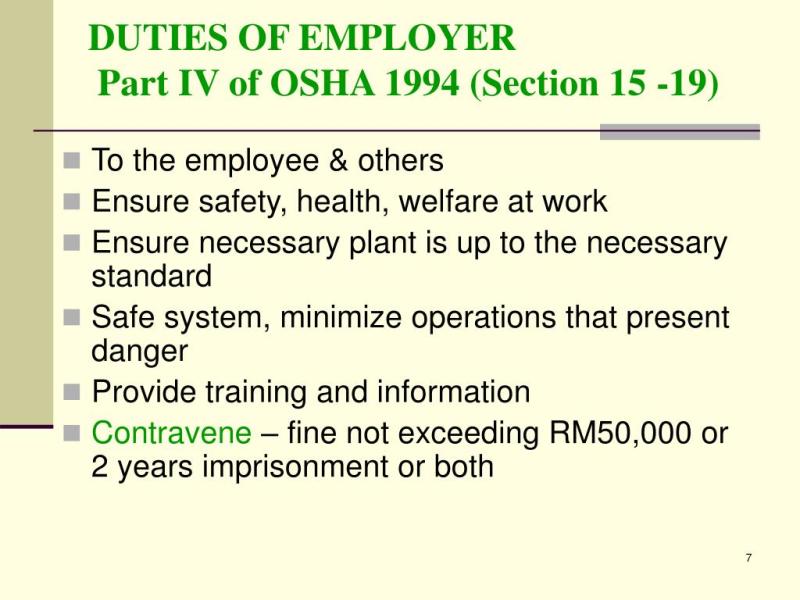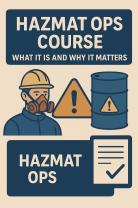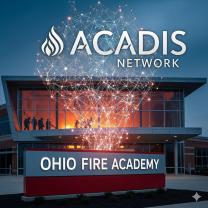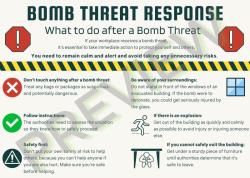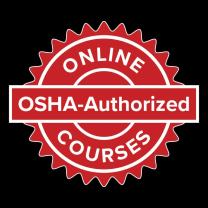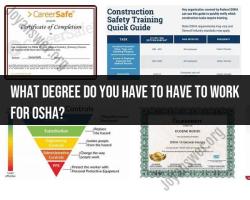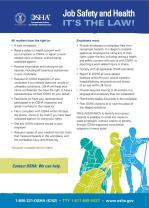What are OSHA employer requirements?
The Occupational Safety and Health Administration (OSHA) sets forth various requirements for employers to ensure workplace safety and health. OSHA is a federal agency that operates within the U.S. Department of Labor. Here are some key OSHA employer requirements:
Hazard Communication (HazCom) Standard: Employers must have a written Hazard Communication Program that includes a list of hazardous chemicals present in the workplace, along with information on the safe use and handling of these chemicals.
Safety Data Sheets (SDS): Employers must maintain Safety Data Sheets for each hazardous chemical in the workplace. SDS provides information on the properties, hazards, and safe use of chemicals.
Personal Protective Equipment (PPE): Employers must assess the workplace to determine if hazards are present that require the use of personal protective equipment (PPE). They are also responsible for providing and ensuring the proper use of PPE.
Emergency Action Plan: Employers must have an emergency action plan in place, including procedures for evacuation, reporting emergencies, and providing medical attention to injured employees.
Fire Safety: Employers are required to have a fire prevention plan and provide training on fire extinguisher use. They must also have proper exits and maintain clear exit routes.
Recordkeeping and Reporting: OSHA mandates that certain injuries and illnesses be recorded on OSHA Forms 300, 300A, and 301. Employers must also report severe injuries, hospitalizations, amputations, or fatalities to OSHA within specified time frames.
Training: Employers must provide training to employees on various safety topics, including hazard recognition, emergency procedures, and the proper use of equipment.
Fall Protection: Depending on the industry, employers may be required to implement fall protection measures to prevent falls from elevated surfaces.
Machine Guarding: Employers must ensure that machines are properly guarded to prevent employee injuries.
Respiratory Protection: If employees are exposed to airborne contaminants, employers must implement a respiratory protection program and provide appropriate respiratory protection.
It's important for employers to familiarize themselves with OSHA standards applicable to their industry and take steps to comply with these requirements. Failure to comply with OSHA standards can result in penalties and fines. Employers can find specific requirements applicable to their industry in the OSHA standards (29 CFR).
What obligations or prerequisites do employers have regarding OSHA requirements?
Employers have a wide range of obligations and prerequisites when it comes to OSHA requirements. These aim to ensure employee safety and health in the workplace. Here's a breakdown of some key aspects:
General Duty Clause:
- Core principle: The Occupational Safety and Health Act's (OSH Act) General Duty Clause requires employers to provide a workplace free from recognized hazards likely to cause serious physical harm or death. This applies to all employers regardless of size or industry.
Specific Standards:
- Industry-specific: OSHA has issued hundreds of specific standards that address hazards faced by workers in different industries and activities. These standards cover areas like construction, chemical safety, bloodborne pathogens, and more. Employers must comply with all applicable standards for their workplace.
- Training: Many standards require employers to train employees on the specific hazards and safe work practices relevant to their jobs.
Other Key Obligations:
- Hazard identification and assessment: Employers must regularly identify and assess workplace hazards to ensure they are addressed. This includes proactive and reactive approaches.
- Hazard communication: If hazardous chemicals are present, employers must develop and implement a written hazard communication program to inform employees about the chemicals they may encounter and proper precautions.
- Personal protective equipment (PPE): When necessary, employers must provide and maintain PPE for employees to protect themselves from job-related hazards.
- Recordkeeping and reporting: Employers must keep records of work-related injuries and illnesses, and report certain serious incidents to OSHA, such as fatalities within 8 hours and inpatient hospitalizations within 24 hours.
Additional Resources:
- OSHA website: The OSHA website is a valuable resource for employers who want to learn more about their obligations and find specific standards and guidance. You can browse by industry, topic, or standard number.
- State OSHA plans: Some states have their own OSHA-approved state plans that cover employers in their jurisdiction. These plans may have additional requirements beyond federal OSHA standards.
Remember, these are just some key points. Employer obligations can vary depending on the specific industry, workplace hazards, and applicable standards. It's crucial for employers to stay informed about their responsibilities and take proactive steps to comply with OSHA requirements to ensure a safe and healthy workplace for their employees.
Feel free to ask if you have further questions about specific OSHA requirements or need help finding relevant resources!
